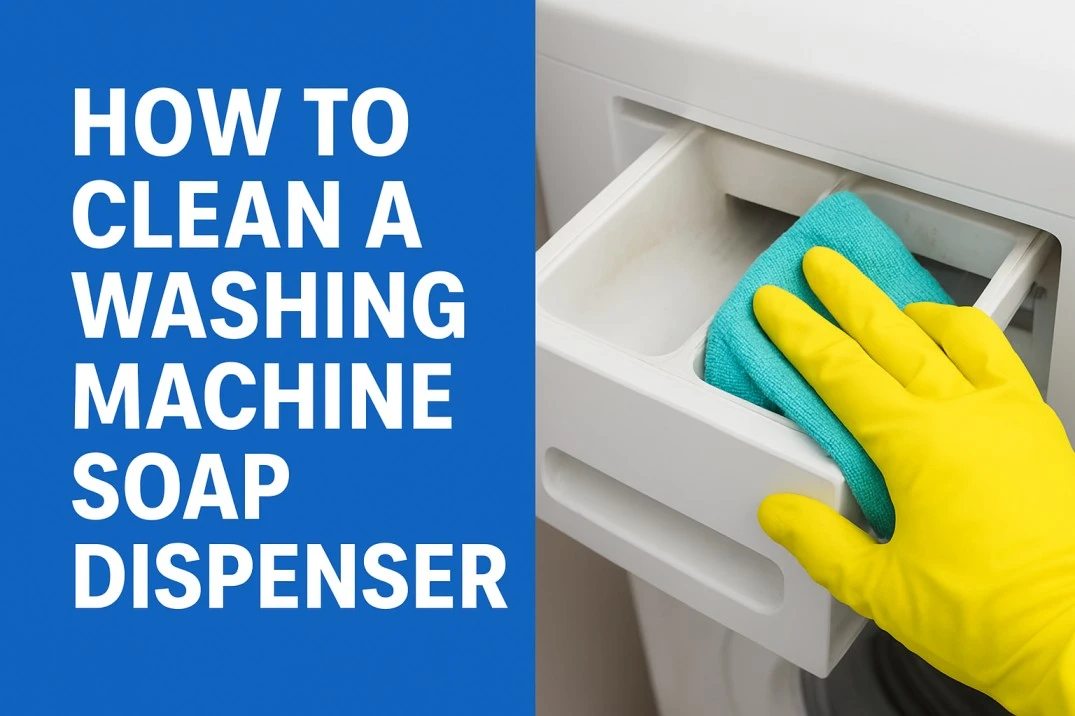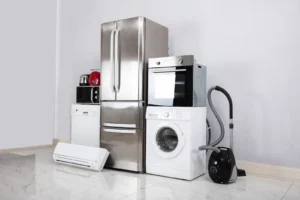This guide helps you to fix your dishwasher that is not using soap, or the dispenser is clogged. Safe DIY steps to clean your dishwasher detergent tray, unclog hoses, and prevent future buildup.
Why your washing machine soap dispenser is clogged (common causes)
Understanding the cause helps you fix it faster.
- Calcium and hard water buildup: mineral deposits (white scale) accumulate inside the tray and channels, obstructing the passage of liquid.
- Detergent residue from fabric softeners and concentrated softeners: these substances can form gunky deposits.
- Mold and mildew: Black moldy paste that clogs outlets is created by damp soap residue.
- Kinked or clogged hoses: Over time, the dispenser’s internal or drain hoses may get clogged.
- Using the incorrect products or overfilling—blockages result from using non-machine items or too much detergent.
- Poor connections or air leaks: Dispensers may stop working due to broken seals or loose hoses.
Tools you’ll need
- White vinegar (or, for more serious mold, a mild bleach solution)
- Microfiber towels or sponges;
- A toothbrush with soft bristles or a little scrub brush
- Rubber gloves and a pail or bowl filled with warm water
- A little soaking container for detachable components
- A Philips screwdriver, if the dispenser assembly is to be removed.
Quick checklist before you start
1. Turn off the water supply and unplug the washer.
2. For instructions on removing the dispenser, see to your owner’s manual (see the brand-specific remarks below).
3. Put on gloves if you plan to use bleach or if there is mold.
Step-by-step — How to clean washer soap dispenser (safe DIY)
These steps cover both front-load and top-load models; adjust if your manual advises otherwise.
- Remove the dispenser tray
Lift the detachable tray out of the detergent drawer after it is completely open. A release tab is included on several models; press it and pull carefully
- Soak removable parts
Pour 1 cup white vinegar (or 1 tablespoon mild bleach per liter for severe mold) and boiling water into a dish. Let the tray and little inserts soak for ten to twenty minutes.
- Scrub residue & channels
To get rid of mold, calcium, and soap scum from cracks, use a soft brush. Steer clear of metal and hard brushes that can cause scratches on plastic. .
- Rinse thoroughly
Run warm water over the parts until all of the vinegar/bleach and any loose residue is gone.
- Wipe dispenser cavity
Use a moist cloth and a small amount of vinegar to clean the tray’s inside cavity. To get to inlets and channels, use the toothbrush.
- Check and clear hoses
Look at the inlet channels and little hoses under the drawer. To clear obstructions, use a gentle pipe cleaner or blow through gently if possible. Anything that could harm the fittings should not be forced.
- Reassemble and run a rinse cycle
Replace the tray, plug the washer in, and rinse with hot water (clothes not included) and 1/4 cup white vinegar to remove any last traces.
How to unclog soap dispenser in washing machine — when nothing else helps
If the dispenser still fails after cleaning:
• Flush the internal channels after attempting to remove the complete dispenser unit in accordance with your service instructions.
• If disassembly makes you uncomfortable, stop and call a specialist; leaks may result from incorrect reassembly.
Prevention tips — keep your dispenser working longer
- Don’t overfill; use the recommended amounts of fabric softener and detergent.
- To lessen residue and suds, use HE detergent for HE machines.
- To remove deposits, run an empty hot wash with 1/4 cup white vinegar every 4-6 weeks.
- To avoid mold, clean the tray and cavity once a month.
- If your water is hard, think about using a water softener or using a descaler once in a while.
Brand-specific notes (quick)
- Samsung: A lot of Samsung drawers come with detachable prewash/softener inserts. Look for a release clip after removing and cleaning both parts. Use a gentle brush and a vinegar soak.
- LG: Pull-to-remove trays with distinct compartments are common on LG machines. Carefully clean the inlet channels and siphon tube; LG manuals caution against pushing parts.
- Whirlpool: Whirlpool dispensers may include internal hoses; if accumulation is significant, the dispenser assembly may need to be partially disassembled; seek advice from a professional or the Whirlpool service manual.
(Always follow your model’s manual — these are general tips.)
When to call a technician
Contact a professional if you notice any of the following after DIY cleaning:
- Persistent leaking or visible water pooling.
- The dispenser still won’t dispense after cleaning and flushing.
- You can’t access or safely remove internal hoses.
- Electrical or valve issues suspected (no cold/hot water flow into dispenser).
A technician can test inlet valves, replace damaged hoses, and service the dispenser assembly safely.


